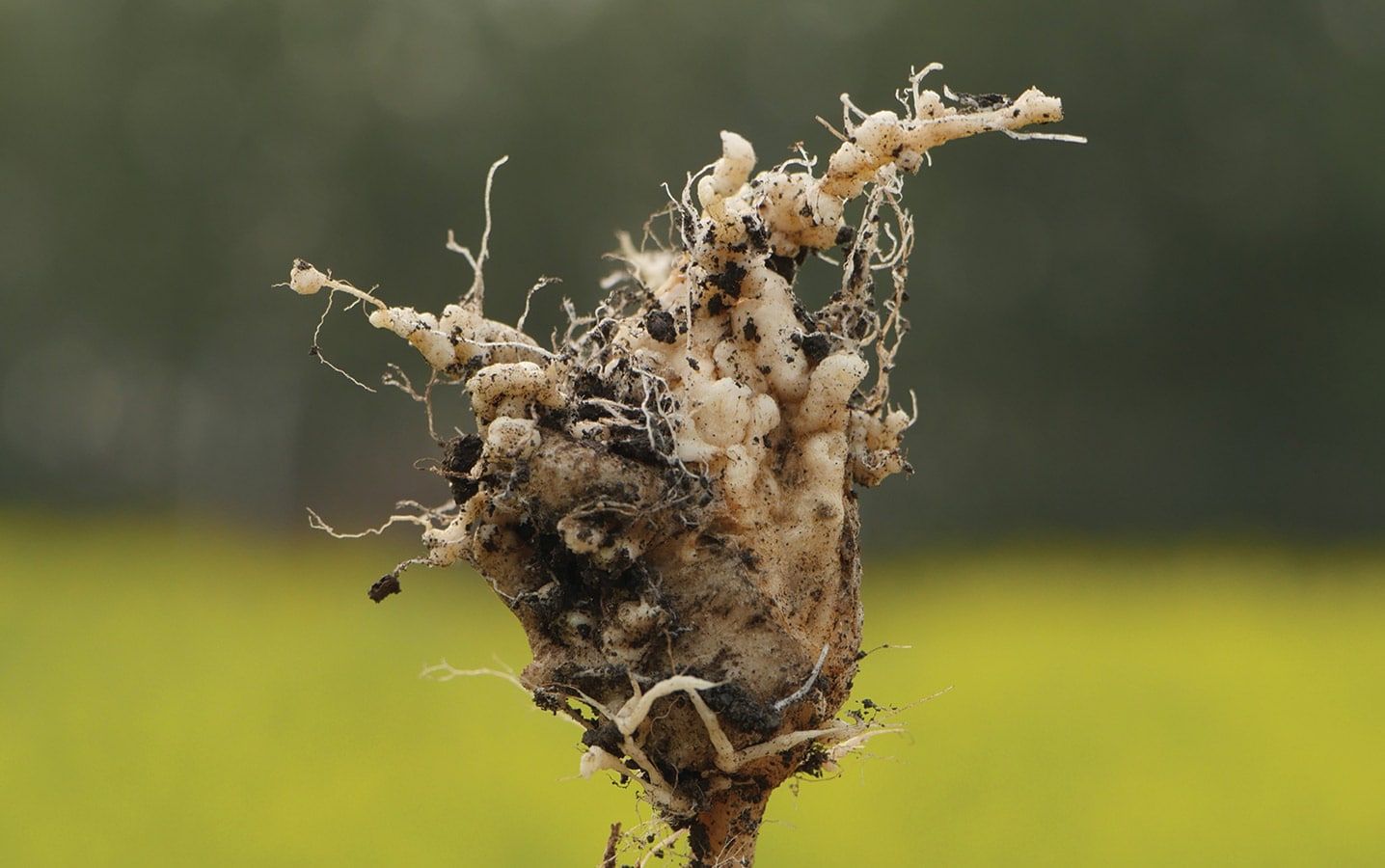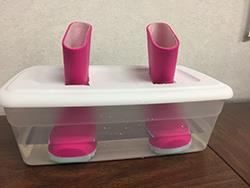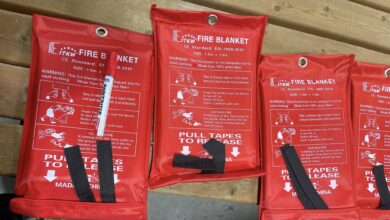
Biosecurity for Preventing the Introduction of Crop Pests
Biosecurity is a series of management practices designed to prevent, minimize or control the introduction and spread of plant pests, including diseases, weeds and insects.
Biosecurity is widely used in the livestock industry, but is still a relatively new concept in the grains and oilseeds industry. These practices have particular value in preventing the introduction of new diseases, weeds and insects. Information on how to implement on-farm biosecurity standards for all crop pests can be found in the National Voluntary Farm-Level Standard for the Grains and Oilseed Industry document.
Most biosecurity protocols centre on preventing the movement of soil and plant material, such as seed, root fragments and residue, which may result in the movement of a crop pest. The strategies outlined below are recommendations for clubroot prevention, but could be used to prevent other soil-borne diseases and crop pests.
Clubroot is a soil-borne disease, which means the clubroot pathogen overwinters in the soil and can be spread any way that soil can be moved. Wind and water erosion, as well as wildlife, are potential vectors as these processes move soil. However, the largest potential vector for spread is through human activity, including field machinery, vehicles and other activities, such as walking. This risk increases when fields are wet.
For clubroot prevention, the focus should be on preventing the movement of infested soil through any activity conducted on agricultural land. Not all activities have the same level of risk. Activities that move large volumes of soil and activities that move soil directly from clubroot-infested areas are considered to have the highest risk. The biosecurity requirements required will vary depending on the risk.
On a farm, complete sanitation of equipment will not be always be practical or required. Below are some practical recommendations that can be used to minimize the risk of introducing clubroot or other crop pests when working in fields.
- When possible, avoid working in wet or muddy conditions. Higher volumes of soil can be moved on equipment and cleaning will be more difficult when fields are wet;
- Take the time to knock as much soil off your equipment as possible between fields. Even if you only have 10 to 15 minutes between fields, something is better than nothing. Remember that if you remove 90 per cent of the soil, you are reducing your risk by 90 per cent;
- If clubroot is known or suspected to occur in a field, always visit that field last and clean your equipment before working in other fields;
- Fully sanitize all newly purchased equipment, particularly if you purchased it from an area with or suspected to have clubroot. This involves pressure washing or using compressed air to remove all soil particles and applying a disinfectant (two per cent sodium hypochlorite) and letting it remain on the surface for 20 to 30 minutes;
- Create a separate exit as far as possible from the field entrance;
- Consider posting multiple “no trespassing” signs to minimize unauthorized vehicles;
- Restrict the entry of vehicles unless they have been properly cleaned; and
- Talk openly about your biosecurity expectations with all individuals who are working on or have access to your land.

Agronomists and others working on agricultural land also have a risk of moving clubroot. This risk increases when working on multiple farms over a large geographic area. Many of the recommended practices will be similar to those mentioned above. When possible, avoid driving into a field and instead walk into the field to complete your work.
When completing field work as an agronomist, it is a good idea to have a biosecurity kit on hand. The following items should be included:
- Disposable boot covers.
- Rubber boots and a scrub brush to remove soil if disposable boot covers are not used.
- To make cleaning simpler, get a plastic container to partially fill with your disinfectant. In the lid, cut two holes so that you can slip the top of your boots through.
- After working in the field, remove your rubber boots and switch shoes, scrub the soil off of the boots and place them in the container in the back of your vehicle. This way they can sit in the disinfectant between fields without making you wait 20 to 30 minutes.
- A disinfectant solution of two per cent sodium hypochlorite should be sued. Sodium hypochlorite is the active ingredient in bleach and is the most effective disinfectant. Virkon® has been found to be only have a minor effect in reducing the viability of the clubroot pathogen and as a result is not recommended.
- Hand-cleaning wipes and paper towel.
- Garbage bags to collect used wipes and boot covers
For the latest information and for more updates on everything Kindersley ‘Like’ the Kindersley Social Facebook page below…








































